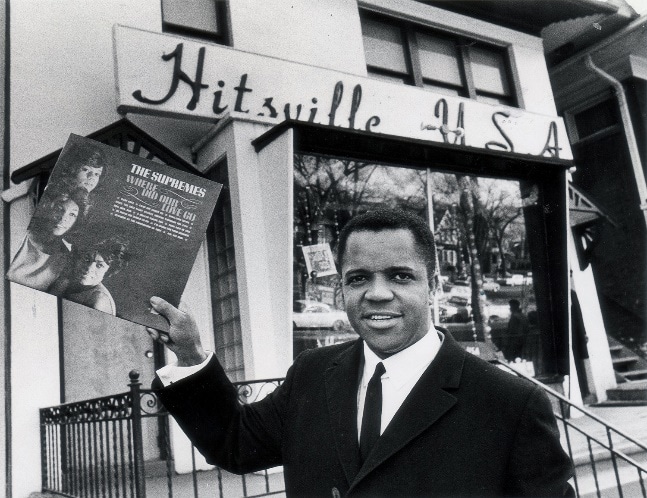Early Motown: “The Sound of Young America”

The Temptations were represented by Motown Records, a Black-owned record label established in Detroit, Michigan in 1959 by Berry Gordy. Motown Records was an industry leader in the production of rhythm and blues (R&B), a genre rigidly defined by its racial ties. Traditionally, R&B artists relied on outlets catering to black consumers, including “black appeal radio stations, neighborhood record stores, and public spaces where jukeboxes provided entertainment” (Flory 1). As a result, R&B limited artists’ potential and narrowed the scope of performance, dissemination, and reception.
Gordy was determined to transcend the confines of the R&B market and broaden the appeal of his groups to a mainstream audience outside of the Black community. While classic rhythm and blues was affiliated with sex, which was admittedly sellable, “Gordy understood that sex, particularly in the years before America’s counterculture would assert itself, would never provide an adequate or acceptable context for black music’s cross-cultural acceptance” (Neal 43). With this in mind, Gordy’s artists and records were infused with “the regularity and standardized simplicity of popular songs” characteristic of Tin Pan Alley (Suisman 57). Gordy made an effort to challenge white America’s traditional conception of Black culture, “predicated on the notion that blacks were, in fact, the natural conduits of a more sexual, sensual and orgasmic living experience” (Neal 43). Motown Records’ artists completely diverged from the seduction of traditional R&B and aligned themselves with the standards of mainstream music.
In the 1960s, Gordy coined Motown as “the Sound of Young America,” meticulously catering his music to younger audiences and adding visual appeals to each performance. For example, Motown artists dressed in “sequin dresses and shark-skinned suits,” flashy clothes that enticed white audiences while communicating that Blacks were already a part of the “liberal bourgeois establishment” (Neal 43). Although Motown Records was successful in creating opportunities for black artists, Gordy’s complete creative control over the label left no room for cultural or personal expression: “At Motown in the ‘60s, producers could write songs and songwriters could produce, but artists, both singers and session musicians, were not permitted to do either” (Neal 44). This resulted in the production of very consistent, homogenous records, as similarities were especially prevalent across several of Motown’s groups in order to maintain the mainstream appeal that Gordy coveted.
In the beginning, young girls were an important target audience for groups such as the Temptations and the Supremes, prompting Gordy to write and produce music that channeled tropes of young love: “females in the teenage group were always in love with some guy; a high-school guy or someone in the neighborhood. It’s just a common feeling–– young girls have crushes” (Flory 53). This meant that the Temptations had to put an image of the crush their young audiences wanted to pursue, their music taking on a light vocal quality to invoke the group’s approachability. Instruments such as the “piano, obbligato saxophone, and a striking quarter note pulse” were all musical elements utilized in order to maintain a light-heartedness and warmth that reflected themes of youth and innocent love (Flory 53). In producing music that told stories of love while maintaining a simple cadence, the Temptations’ early works reflected a divergence from traditional R&B towards the elements of Tin Pan Alley that appealed to mainstream audiences.